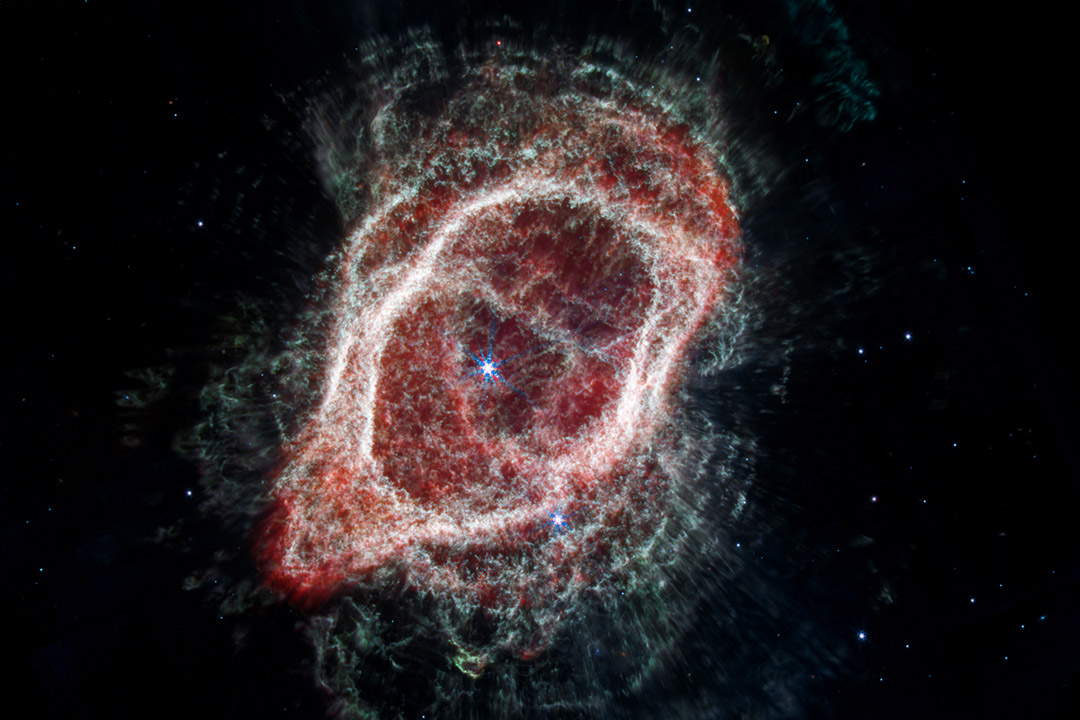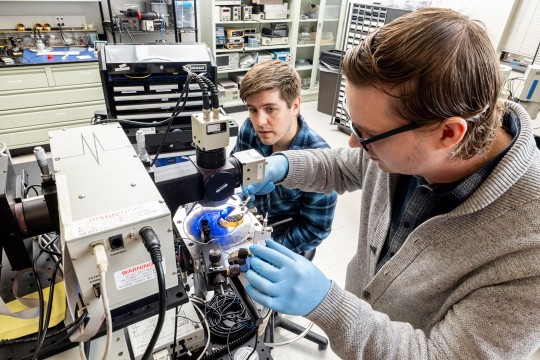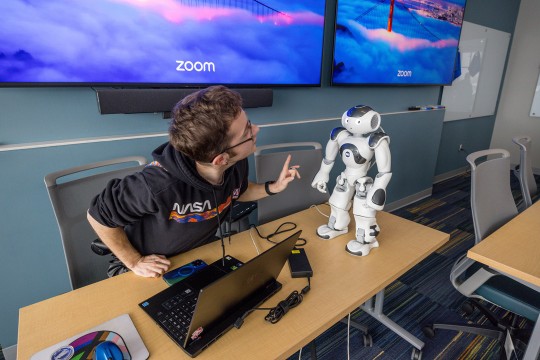Scientists release new insight about Southern Ring Nebula
RIT Professor Joel Kastner authors paper in 'The Astrophysical Journal' reporting deeper understanding of the nebula’s structure from Submillimeter Array radio telescope images
NASA/ESA/CSA/STScI
The Southern Ring Nebula, or NGC 3132, was one of the first objects observed by the James Webb Space Telescope.
Planetary nebulae have been studied for centuries, but astronomers are getting new looks and a better understanding of the structures and compositions of these gaseous remnants of dying stars thanks to the ability to study objects at multiple wavelengths and dimensions.
The Southern Ring Nebula, or NGC 3132, is one such object. Rochester Institute of Technology Chester F. Carlson Center for Imaging Science and School of Physics and Astronomy Professor Joel Kastner and his team used Submillimeter Array (SMA) mapping to take a closer look at the nebula, which was one of the first cosmic objects observed by the James Webb Space Telescope soon after its deployment in 2022. The researchers found that most of the molecular gas in the nebula actually lies in an enormous, expanding ring, and further, that the nebula has a second, nearly perpendicular, expanding ring. The research findings were recently published in The Astrophysical Journal. Kastner is the founding director of RIT’s Laboratory for Multiwavelength Astrophysics.
Inspired by the JWST infrared images, which dramatically reveal how hydrogen gas in molecular form threads through the Southern Ring, Kastner and the team used SMA radio-wavelength mapping to measure both the distribution on the sky and the precise velocities of carbon monoxide gas in the nebula. The measurements establish which regions of the Southern Ring Nebula are moving toward and away from us, revealing the two rings. The team’s new SMA results support previous findings that the nebula’s present form is the result of interactions between the dying star and one or possibly two companion stars.
“JWST showed us the molecules of hydrogen and how they stack up in the sky, while the Submillimeter Array shows us the carbon monoxide that is colder that you can’t see in the JWST image,” explained Kastner. “The extra velocity dimension from the array’s radio wavelength observations then effectively allows us to see the nebula in 3-D. When we started to turn the whole nebula around in 3-D, we immediately saw it really was a ring, and then we were amazed to see there was another ring.”
Planetary nebula form when stars of roughly the sun’s mass die and eject their outer, gaseous layers. Those elements are distributed back into space, some of which were generated in nuclear reactions within the former star, might eventually be incorporated into planets and their atmospheres. In addition, despite the former belief that any molecules in a planetary nebula should be destroyed by the newly unveiled stellar core’s intense UV radiation, Kastner and others have established that some objects, like NGC 3132, can contain massive amounts of molecular gas.
“Where does the carbon and the oxygen and the nitrogen in the universe come from?” said Kastner. “We’re seeing it generated in the sun-like stars that are dying, like the star that’s just died and created the Southern Ring. A lot of that molecular gas could wind up in planetary atmospheres and atmospheres can enable life.”
This recent finding has fueled discussions with astronomers across the globe and is leading them to now look at additional well-known planetary nebulae to see if aspects like NGC 3132’s perpendicular rings have not been seen simply because the right observations have not yet been performed.
“It’s interesting because with JWST we now get these beautiful, very crisp images,” added Kastner. “Then we use our ground-based tools to follow up. It offers the chance to see an object like this in a totally new way and deepen our understanding.”
Kastner is the lead author of the recently published paper on this discovery that also included RIT astrophysical sciences and technology Ph.D. student Paula Moraga Baez. Other co-authors include David Wilner (Harvard & Smithsonian), Jesse Bublitz ’20 Ph.D. (astrophysical sciences and technology) (Green Bank Observatory), Orsola De Marco (Macquarie University), Raghvendra Sahai (Jet Propulsion Laboratory), and Al Wootten (National Radio Astronomy Observatory). Kastner's research on molecular gas in planetary nebulae is supported by a grant from the National Science Foundation.
Newly imaged Southern Ring Nebula in 3D
Joel Kastner, Center for Imaging Science, reports new results from his recent Submillimeter Array radio-wave 3D imaging of the Southern Ring Nebula.









